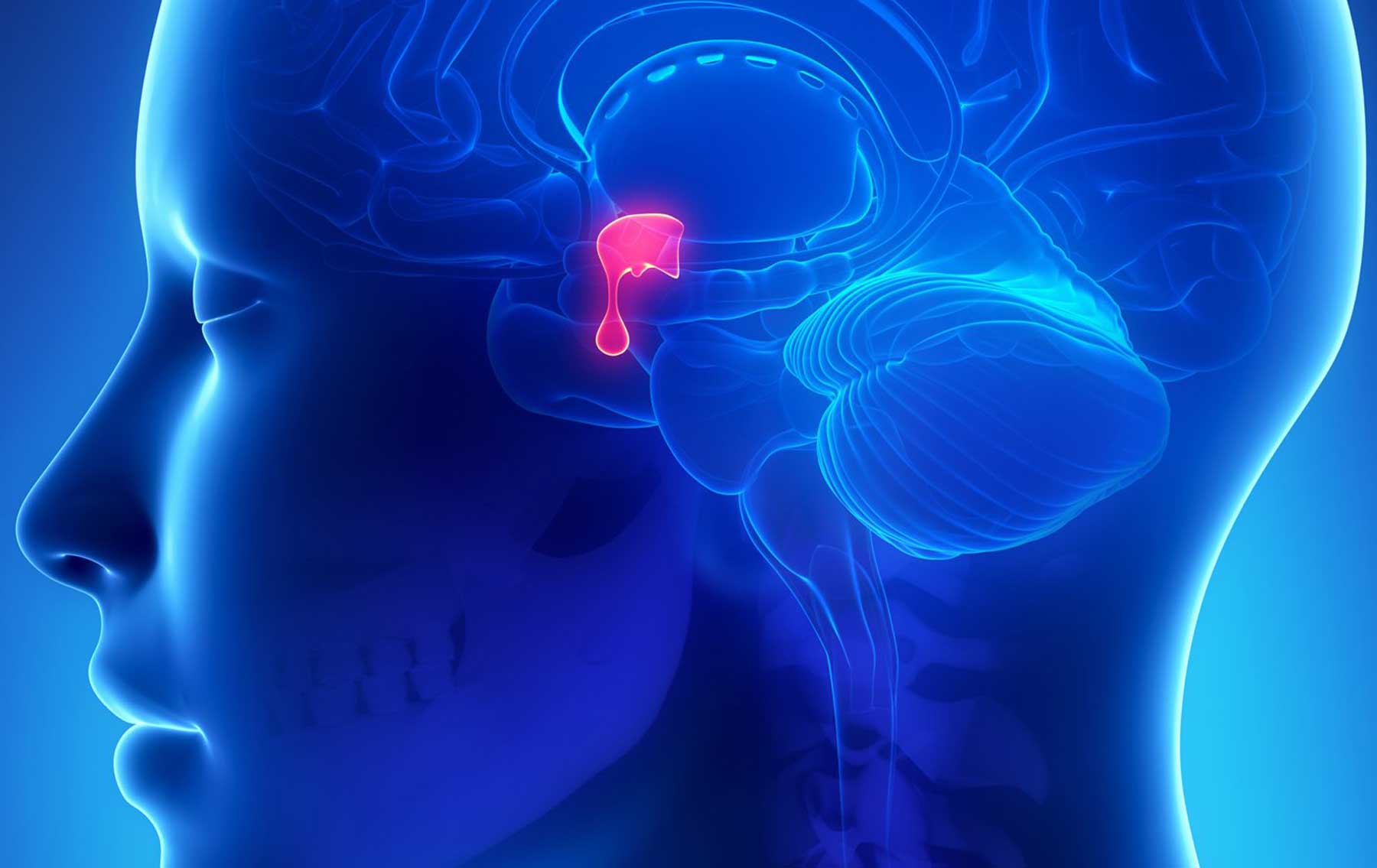Meningiomas are the most common benign intracranial tumor. They originate from arachnoid cap cells, which…

The pituitary is a small gland attached to the base of the brain (behind the nose) in an area called the pituitary fossa or Sella turcica. The pituitary is often called the “master gland” because it controls the secretion of most of the hormones in the body. A normal pituitary gland weighs less than 1 gram and is about the size and shape of a kidney bean.
The function of the pituitary can be compared to that of a household thermostat. The thermostat constantly measures the temperature in the house and sends signals to the heater to turn it on or off to maintain a steady, comfortable temperature. The pituitary constantly monitors bodily functions and sends signals to remote organs and glands to monitor their function and maintain the appropriate environment. The ideal “thermostat” setting for a body depends on many factors, including level of activity, gender, body composition, etc.
A large majority of pituitary adenomas are benign and are relatively slow growing. Adenomas are by far the most common disease affecting the pituitary gland. These tumors most commonly affect people in their 30s or 40s, although they can be diagnosed in children as well. Most of these tumors can be successfully treated. Pituitary tumors can vary in size and behavior. Tumors that produce hormones are called functioning adenomas, while those that do not are called nonfunctioning adenomas.
Treatment
Early intervention provides the best chance for cure or control of a pituitary tumor and its side effects. There are three types of treatment used for pituitary tumors: surgical removal of the tumor, radiation therapy using high-dose x-rays to kill tumor cells and medication therapy to shrink or eradicate the tumor.



